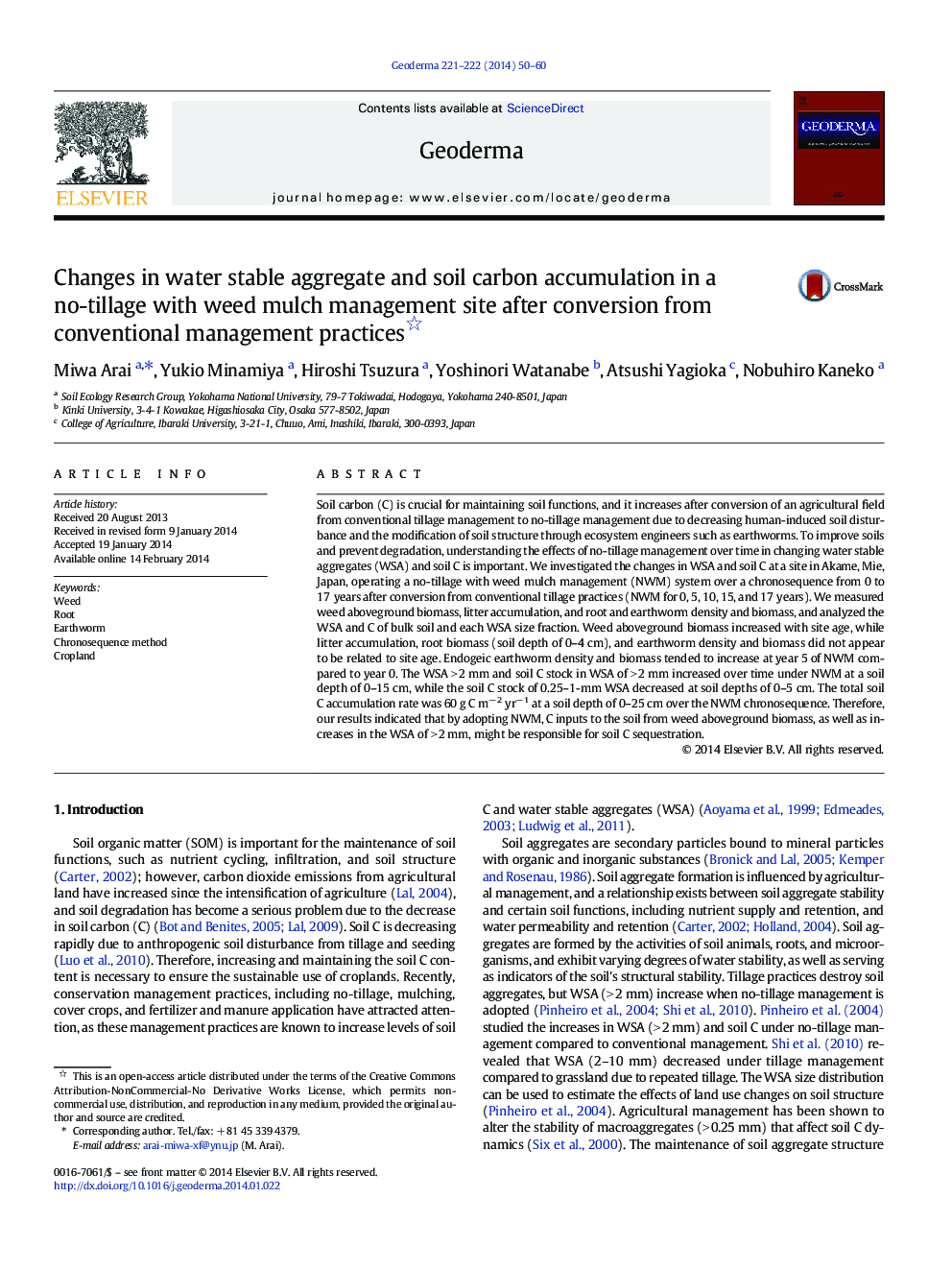| کد مقاله | کد نشریه | سال انتشار | مقاله انگلیسی | نسخه تمام متن |
|---|---|---|---|---|
| 6408808 | 1629474 | 2014 | 11 صفحه PDF | دانلود رایگان |
عنوان انگلیسی مقاله ISI
Changes in water stable aggregate and soil carbon accumulation in a no-tillage with weed mulch management site after conversion from conventional management practices
ترجمه فارسی عنوان
تغییرات در تجمع پایدار آب و تجمع کربن خاک در خاک بدون کشت با محل مدیریت مالچ علف های هرز پس از تبدیل از شیوه های مدیریت معمول
دانلود مقاله + سفارش ترجمه
دانلود مقاله ISI انگلیسی
رایگان برای ایرانیان
موضوعات مرتبط
مهندسی و علوم پایه
علوم زمین و سیارات
فرآیندهای سطح زمین
چکیده انگلیسی
Soil carbon (C) is crucial for maintaining soil functions, and it increases after conversion of an agricultural field from conventional tillage management to no-tillage management due to decreasing human-induced soil disturbance and the modification of soil structure through ecosystem engineers such as earthworms. To improve soils and prevent degradation, understanding the effects of no-tillage management over time in changing water stable aggregates (WSA) and soil C is important. We investigated the changes in WSA and soil C at a site in Akame, Mie, Japan, operating a no-tillage with weed mulch management (NWM) system over a chronosequence from 0 to 17 years after conversion from conventional tillage practices (NWM for 0, 5, 10, 15, and 17 years). We measured weed aboveground biomass, litter accumulation, and root and earthworm density and biomass, and analyzed the WSA and C of bulk soil and each WSA size fraction. Weed aboveground biomass increased with site age, while litter accumulation, root biomass (soil depth of 0-4 cm), and earthworm density and biomass did not appear to be related to site age. Endogeic earthworm density and biomass tended to increase at year 5 of NWM compared to year 0. The WSA > 2 mm and soil C stock in WSA of > 2 mm increased over time under NWM at a soil depth of 0-15 cm, while the soil C stock of 0.25-1-mm WSA decreased at soil depths of 0-5 cm. The total soil C accumulation rate was 60 g C mâ 2 yrâ 1 at a soil depth of 0-25 cm over the NWM chronosequence. Therefore, our results indicated that by adopting NWM, C inputs to the soil from weed aboveground biomass, as well as increases in the WSA of > 2 mm, might be responsible for soil C sequestration.
ناشر
Database: Elsevier - ScienceDirect (ساینس دایرکت)
Journal: Geoderma - Volumes 221â222, June 2014, Pages 50-60
Journal: Geoderma - Volumes 221â222, June 2014, Pages 50-60
نویسندگان
Miwa Arai, Yukio Minamiya, Hiroshi Tsuzura, Yoshinori Watanabe, Atsushi Yagioka, Nobuhiro Kaneko,
